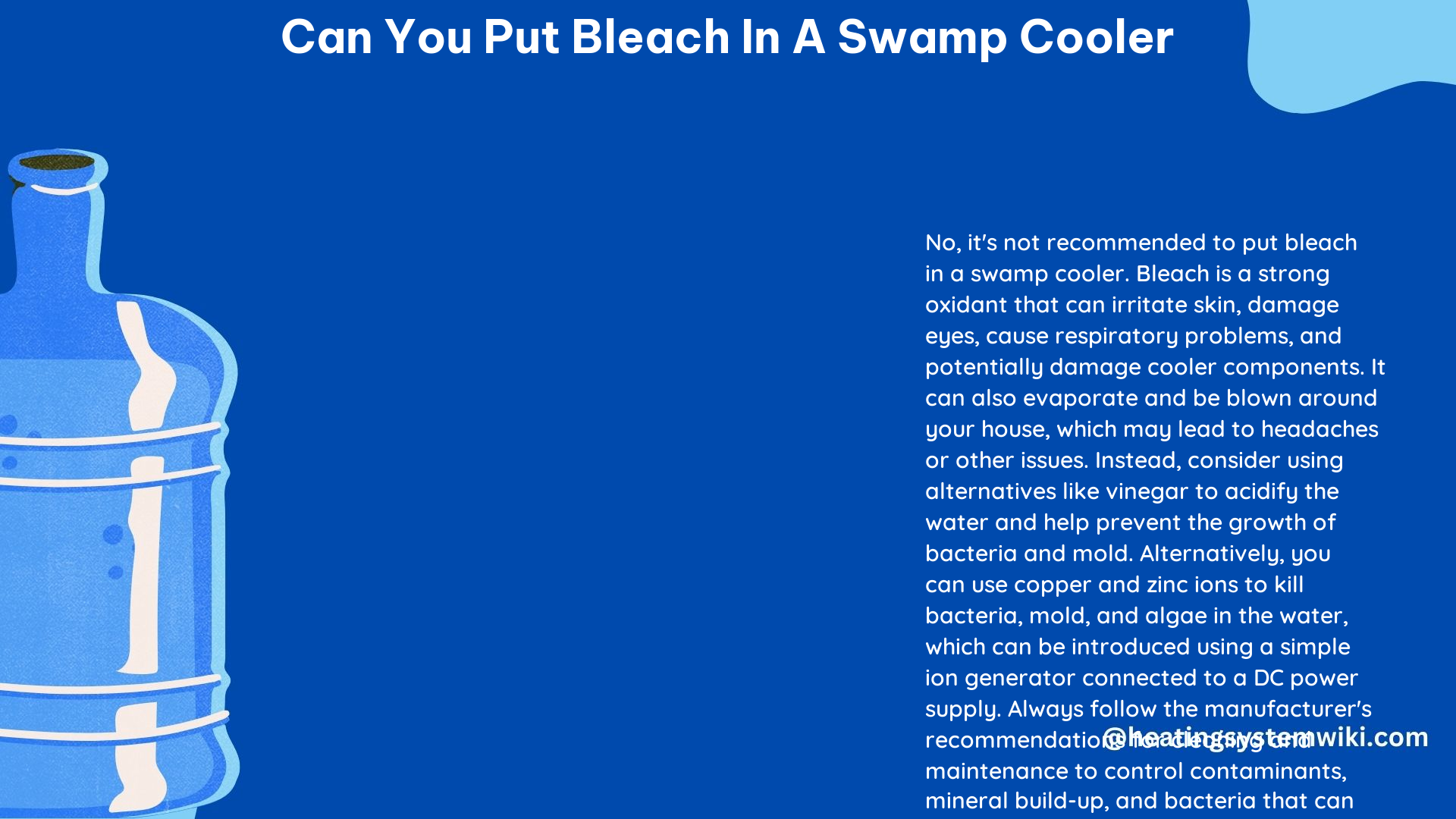Swamp coolers, also known as evaporative coolers, are a popular and energy-efficient way to cool homes, especially in dry climates. However, maintaining these units can be a challenge, and some homeowners may be tempted to use bleach as a cleaning solution. But is it really a good idea to put bleach in a swamp cooler? Let’s dive into the details.
The Dangers of Using Bleach in a Swamp Cooler
Bleach is a strong oxidizing agent that can cause significant damage to the components of a swamp cooler. When added to the water in the cooler, bleach can:
-
Corrode Metal Parts: The high concentration of chlorine in bleach can accelerate the corrosion of metal parts, such as the pump, fan, and water distribution system. This can lead to premature wear and tear, reducing the lifespan of the cooler.
-
Degrade Pads and Filters: Bleach can break down the materials used in the cooler’s pads and filters, making them less effective at absorbing and evaporating water. This can result in reduced cooling performance and the need for more frequent replacements.
-
Irritate Skin and Eyes: Exposure to bleach can cause skin irritation, eye irritation, and respiratory problems, especially for those with sensitive skin or respiratory conditions.
-
Produce Toxic Fumes: When mixed with water, bleach can release chlorine gas, which is highly toxic and can be dangerous to inhale.
Alternative Cleaning Methods for Swamp Coolers

Instead of using bleach, there are several safer and more effective ways to clean and maintain your swamp cooler:
1. Sunflower Zinc Anode
The Sunflower Zinc Anode is a popular and inexpensive solution for swamp cooler maintenance. This product is designed to:
- Prevent rust and corrosion in the pan and other metal parts
- Inhibit the growth of bacteria that can cause the “fishy” odor
- Last up to 3 years, providing long-lasting protection
The Sunflower Zinc Anode is a simple and effective way to keep your swamp cooler in top condition without the use of harsh chemicals.
2. EPA-Approved Biocides
Another alternative to bleach is the use of biocides that are specifically approved by the Environmental Protection Agency (EPA) for use in evaporative coolers. These biocides are designed to kill bacteria, algae, and other microorganisms that can build up in the cooler, without causing damage to the unit’s components.
When using biocides, it’s important to follow the manufacturer’s instructions carefully to ensure proper dosage and application. Overuse or improper use of biocides can also be harmful, so it’s essential to use them as directed.
3. Regular Cleaning and Maintenance
In addition to using alternative cleaning products, it’s crucial to establish a regular cleaning and maintenance routine for your swamp cooler. This includes:
- Cleaning the water pan and removing any debris or mineral buildup
- Replacing the pads and filters as recommended by the manufacturer
- Inspecting the unit for any signs of wear or damage
- Ensuring the water distribution system is functioning properly
By keeping your swamp cooler clean and well-maintained, you can prevent the growth of harmful microorganisms, extend the life of the unit, and maintain optimal cooling performance.
Conclusion
In summary, it is not recommended to use bleach in a swamp cooler. Bleach can cause significant damage to the unit’s components, as well as pose health risks to the user. Instead, consider using alternative cleaning methods, such as the Sunflower Zinc Anode or EPA-approved biocides, and establish a regular cleaning and maintenance routine to keep your swamp cooler in top condition.
Remember, the key to maintaining a safe and efficient swamp cooler is to use the right cleaning products and techniques, and to stay vigilant about regular maintenance. By following these guidelines, you can enjoy the benefits of your swamp cooler for years to come.
